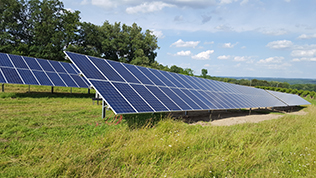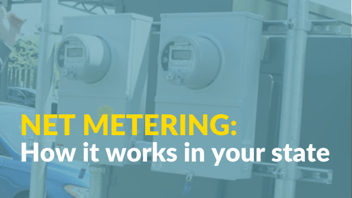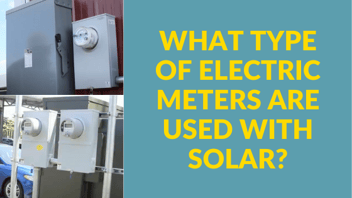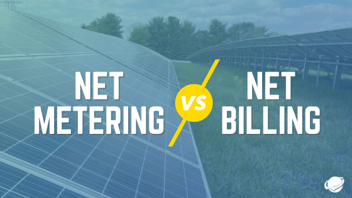
Virtual net metering, also referred to as virtual meter aggregation, is a billing mechanism that allows a customer to credit kWh’s (kilowatt-hours) from one meter to another. To fully understand how this works, one must have a basic understanding of net metering.
Net metering simply allows a customer who installs a solar array to get the same value for every kWh produced, whether it is used immediately by the customer, or passed back to the grid and used at a later time.
For more about net metering, click here. Virtual net metering allows the customer to not only gain the benefit of each kWh produced for that meter, but also to credit additional kWh’s to another meter.
What are the Benefits?
The primary benefit of virtual meter aggregation is lower cost. Sometimes this can result in a larger or more efficient solar array installation. For example, if a client has two meters, each of which use 50,000 kWh/year, he can potentially install one 80 kW (kilowatt) solar array to cover the usage for both meters rather than two separate 40 kW solar arrays, one for each meter. This typically results in lower costs. Even if physical meter aggregation would be possible, typically the costs for physical meter aggregation would be significantly higher than for virtual meter aggregation.
What’s the Catch?
Policies and availability of virtual net metering vary by state and by utility. Some states have laws that govern this benefit, while others do not. Typically if virtual net metering is available, there are some requirements associated with it. In most cases the meters that will be aggregated need to be in the same customer name, in the same utility service territory, and within a certain distance from each other (typically 2 miles). In some situations, additional monthly billing costs may apply, which a customer would be responsible for paying.
While virtual net metering can be of great benefit to customers who have multiple meters, it is important to consult with a reputable solar installer as well as your local utility before making plans to utilize this benefit.
Have questions? Send us a message.



